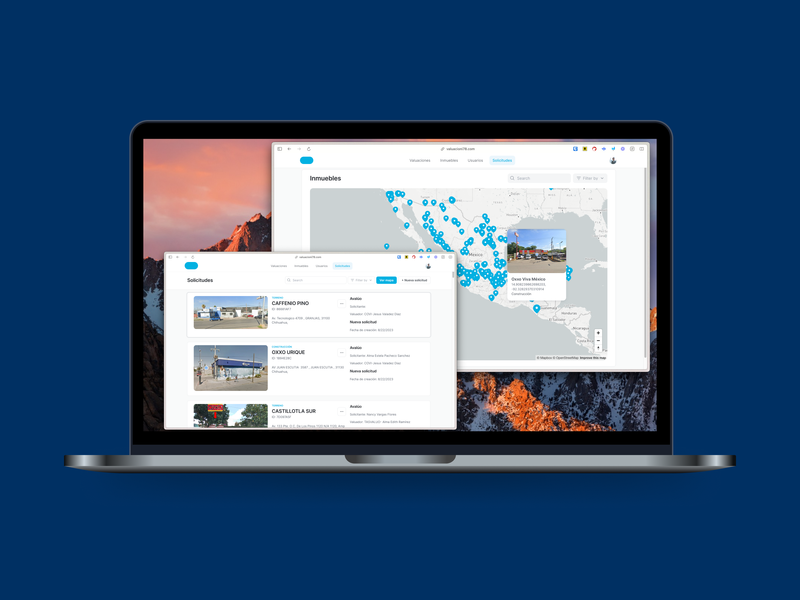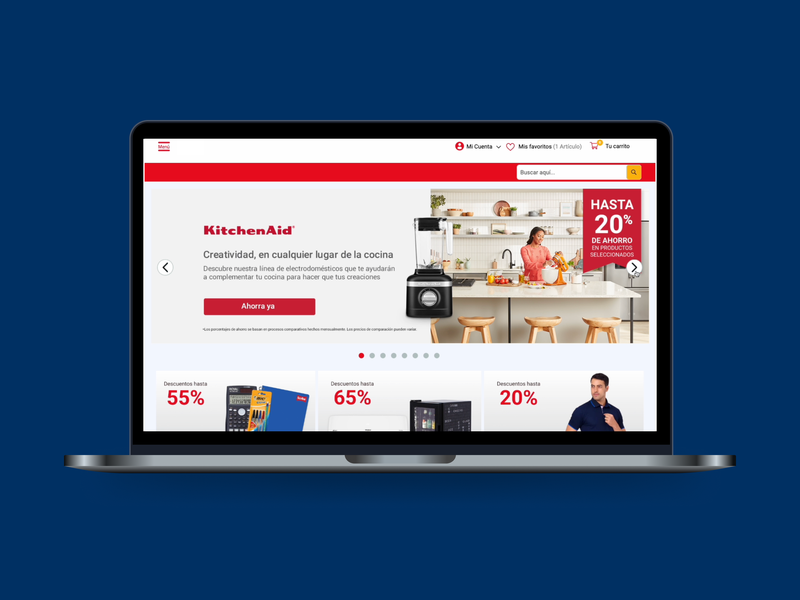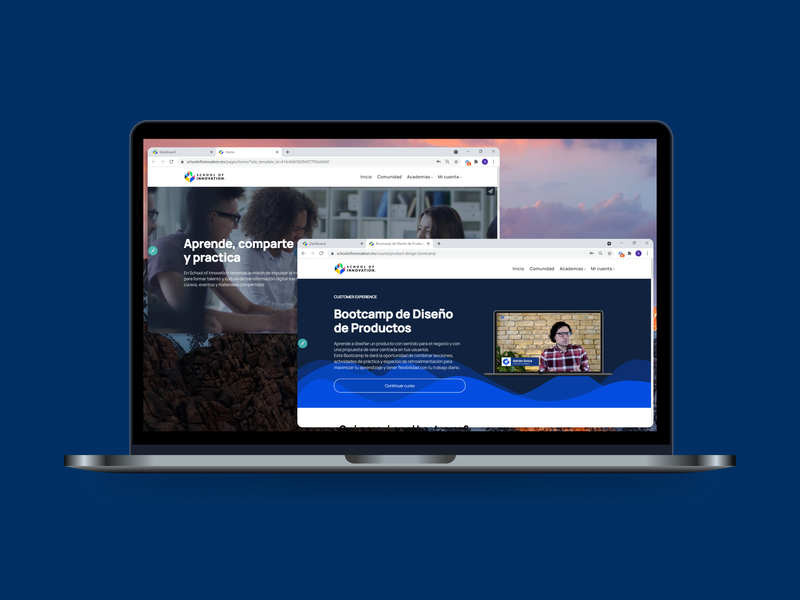Context
I worked for the Digital Transformation department in the Innovation Lab team as their first Product Manager for consultancy projects where I was assigned by percentages to different business units but also to internal initiatives aligned with the corporate's goals.
The real estate team in the retail business unit had their operations in paper and physical storage, using MS Office, MS Outlook and WhatsApp for control and communication. They receive requests from business units to value properties so they could evaluate buying or renting and build a store.
They saw potential in all the data stored from years, plus the information going on during operational tasks so they could run an algorithm and predict square meter's value per zone. It could reduce at least half operational tasks and costs, besides maximizing assets value knowing where to buy, rent, or sublease.
Glossary
Appraisal: Land or building value estimation made a professional and certified expert (Appraiser). This value is justified in a legal document used by lenders, investors, or others to complete transactions. It is based on the comparisson of 3+ properties using at least 2 different analysis methods, besides considering industry benchmarks that changes with the law every year, sometimes.
Informal valuation: This is a faster and cheaper version of an Appraisal. Follows the same rules but doesn't requiere legal backup. It's used as a reference, normally to sense the price of a zone.
Property: They could be residential or commercial and refers to simply land, a building or fragment of those.
Machine Learning (ML): Discipline within the field of Artificial Intelligence which, by means of algorithms, provides computers with the ability to identify patterns from mass data in order and to make predictions (predictive analytics).
Low-Code: Visual approach to software development that enables faster delivery of applications through minimal hand-coding, normally drag-and-drop features that eliminates dependencies on traditional computer programming approaches.
Challenge
In a couple of weeks, I designed a proposal for the team so they could get buy in from higher management. This took longer than expected, they had never built or operate a digital platform nor product. Moreover, they expected a waterfall full product development. So, MVP, Agile, UX Design and User research were not as valued as "micro-managed code time".
We got 3 objectives from the business:
2. Have a structured digital archive of the historical appraisals conducted.
3. Provide decision-making intelligence in real estate valuation through the analysis of gathered data using machine learning (ML).
Besides the MVP Product management, I also managed the project budget: eventually up to US$350k. So I arranged a (non-full-time) Agile team of 1 Data scientist, 1 Data engineer, 2 Data Interns, 2 Product Designer, 2 UX Researchers, and 1 Visual Designer, from our Department. I also interview 6 agencies and hired a Low-Code agency to handle the development, but they worked in Waterfall, which complicated our timeframes.
Solution
I worked with the stakeholders and agreed on 4 releases. Those were planned according to the 3 business goals but as product milestones:
- Alpha: Appraisal system manager for new requests, current appraisals, and appraisers data.
- Beta: Digital archive from 5 years of appraisals
- Gamma: Platform open to appraisers to generate their docs
- Delta: Predictive analysis tool with archive and operational data
After the kick-off, to keep deadlines, we had to work on 4 simultaneous initiatives:
- Create the web platform with the correct user experience. – Alpha/Gamma front-end features.
- Digitalize 5 years of PDFs appraisals archive. – Beta data update.
- Develop the ML predictive model. – Connected to Delta release.
- Comply IT Security company regulations and get approval from Legal Department to handle users data.
We started in October and Alfa was release in December 2022 (3-months), Beta in February 2023, Gamma in July, and Delta by August.

Alpha – Appraisals management
This was a big research effort. After interviews, we mapped all appraisal's subprocesses to outline platform navigation flows, functionalities, and interactions.

In parallel, I evaluated our technical possibilities considering business needs, the type of information, and user context. So, I researched and tested various Low-code technologies to reduce technical effort and time to market. So I interviewed 6 agencies and hired a Glide Expert Agency: LowCode.
We created a prototype design to test the concept with users and then redesign the scope of features, interface, and interactions.

To match with the waterfall style of the Low-code agency, I used a design–develop by user flows, so progressively we enabled usability tests: Requesters, Appraisers, Real Estate Admin, and the System Admin.
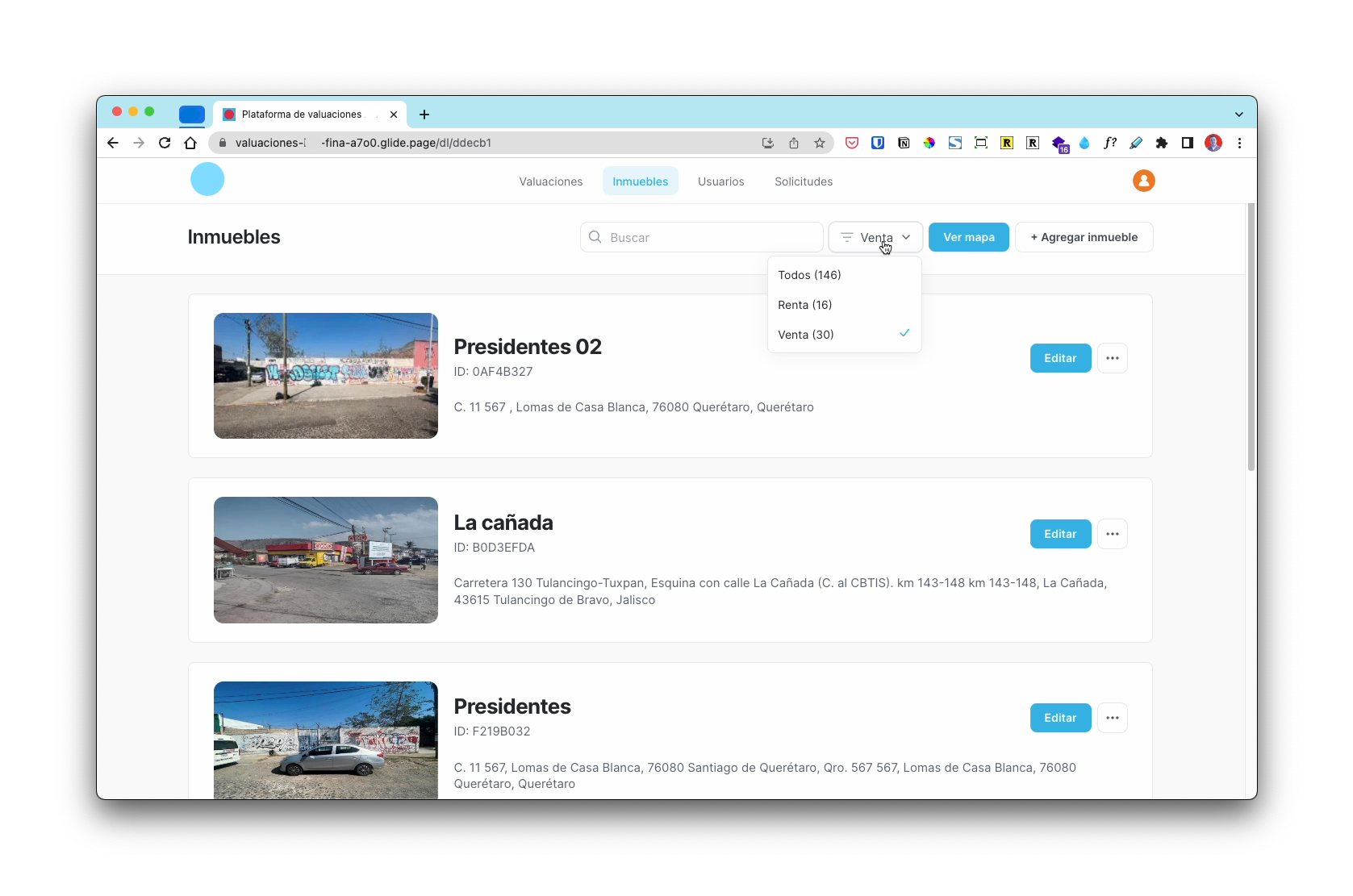
In the second week of December, we invited a dozen appraisers and requesters to test the platform for their main tasks and evaluate the experience. We received ratings around 4/5 for Ease, Reliability, and Platform Understanding. We released these validated features:
- Appraisal requests manager
- Digital appraisals with 40/400 fields – Perfect for informal valuations
- Properties collection
- Appraisers directory
- Users management and visibility permissions
- Publish 100 appraisals from the progress on the digital archive
- Maps with coordinates and images
The Beta update – Loading a 5 years archive
We used Azure Cognitive Services to recoignize content in the 3 PDF formats we received, then Map those fields into tables to export to a Database. Later, those were standardized (cleaned) and passed by manual revision of the most important data (400+ fields).
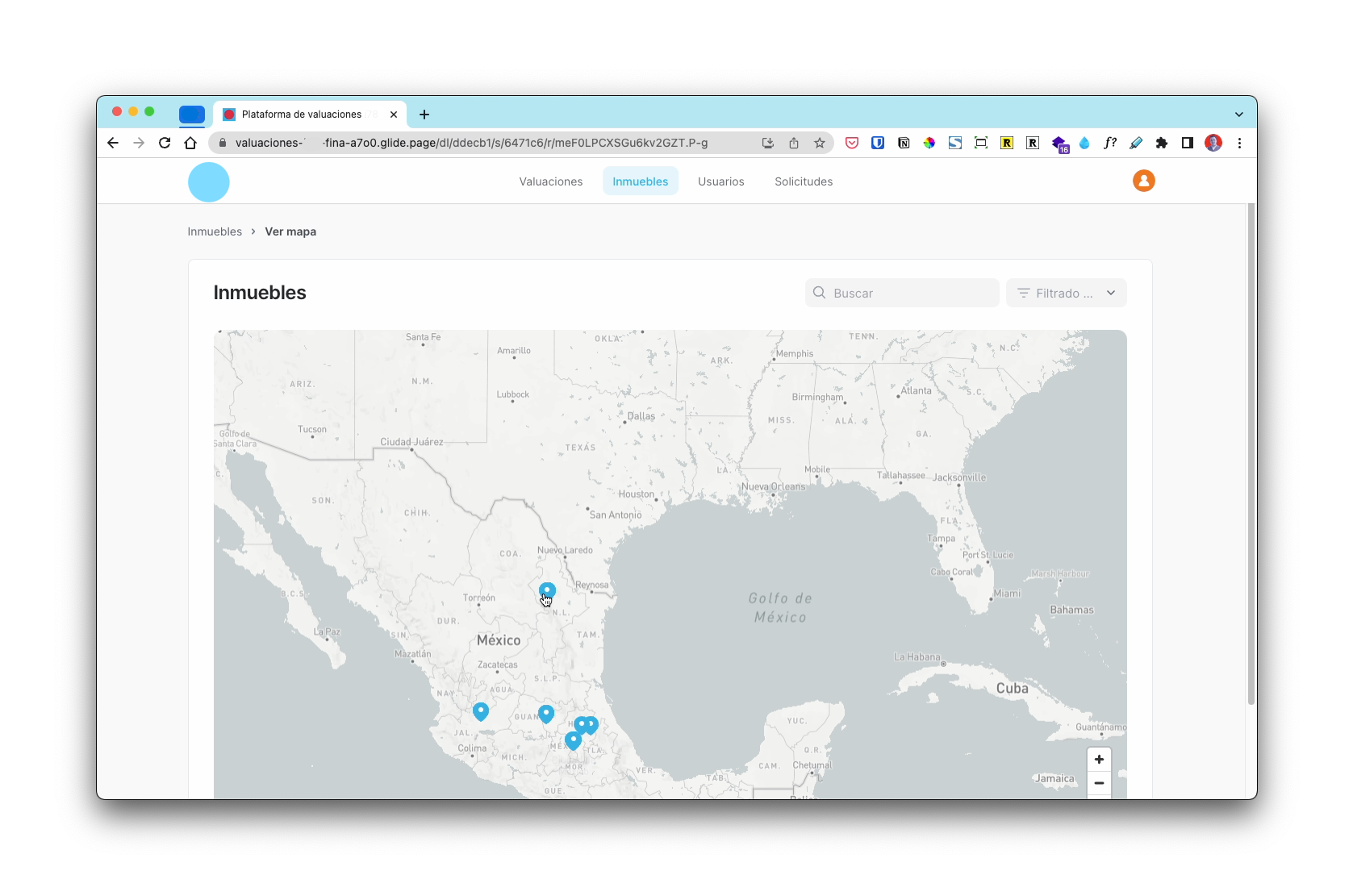
This was a 4 month effort (February release) to nurture the initial database with 2000 appraisals from 5 states basically. Even these were not really used by the team, they were vital for giving structure to the database and to nurture the predictive model in the following months.
Gamma release – A more robust back-end
Alfa version was way more succesful than expected. It even broke the database twice. So this released was replanned to robust our back-end features.

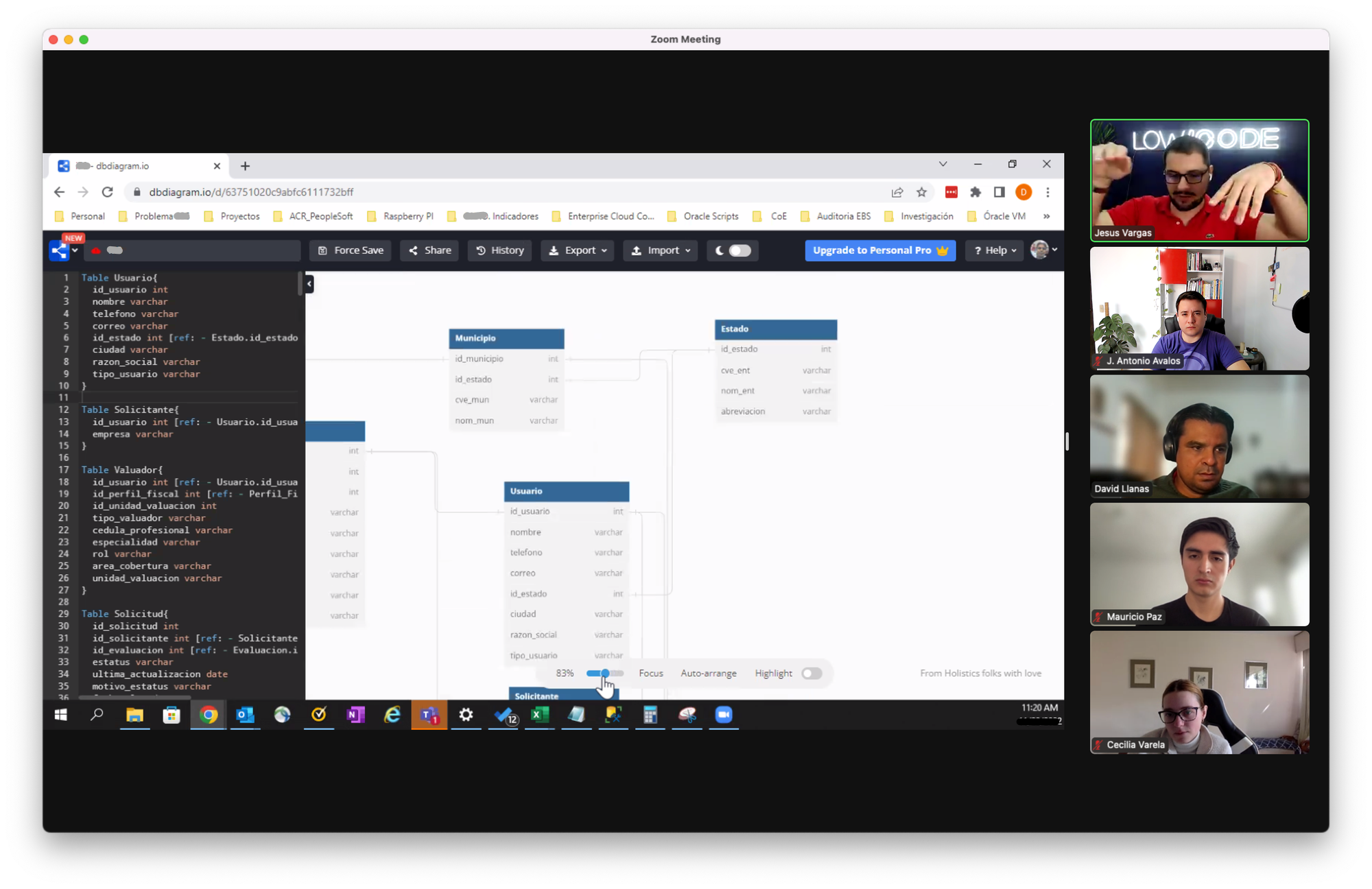

We moved from Secured Spreadsheets in our Sharepoint to native "Glide Big Table" to get better performance, operations robustness and simplifying "Actions" to less complex automations or custom code.
We introduced a new user type: Appraisals agencies. And, enabled 3 new sections: Taxes, Predictive analytics, and Archive. So, the Alfa release had the Beta update with all the 2000 appraisals from the archive, now at July 2023 we offered 7 sections for 5 type of users:

This fully changed users' dynamic. Now Agencies could manage their Appraisers and handle their workload, reducing work for the Real estate Administrators and justifying the charge for use (next year) for agencies to use the system for their own appraisals, properties and users.




And we changed from 1 System Admin to several more to control Taxes (Invoices and payments were ahead next year) and Predictive analytics (Selling access to this section was planned in the next 2 years).
At the end, Delta released the last section:
This was a 6-month development. After some changes from the initial infrastructure, it worked with: Azure Processing (Cognitive Services + Databricks), Storage account, Integration (Data factory) so it could connect to the native tables of our Low-code platform (Glide) as front-end, showing maps with Mapbox API and graphs from MS Power BI.


It offered different types of predictive analysis: By key indicators. Price per square meter and types of surroundings. Besides, Simulations for: Rent vs. Buy, Appreciation projection, and automatic valuation.
Outcome
Today, the process was reduced from 2–5 days to 1–3 days. And the Real state team won't need anymore to outsource communition between valuation requests. Appraisal agencies and independents now spend less than 16 min instead of a couple of hours to fill and create a PDF appraisal.

In August 2023, we registered that everyday 15 new requests were registered on average, since the release in December 2022. We reached 3.7k+ properties from 610+ appraisals by 1100 registered users.
The system will keep all the valued properties data, plus it has preloaded +2000 appraisals of all properties valued since 2017.
And, the ML predictive model transform all data into tables, graphs and interactive maps with zoom and heatmaps, to display 27 Relevant indicators by zone or environment, and a Rent vs Buy calculator with 15 values prediction.
Even these are not accurate, yet. It'll take around 1–2 years of operations to gather enough data to generate national predictions valid for commercial purposes. Or buying appraisals records from other companies –Which was under consideration.
And this platform opened doors to new income from appraisers and agencies to use the system to manage files, besides nurturing the real product to sell: properties value predictions and zone's value estimation.
